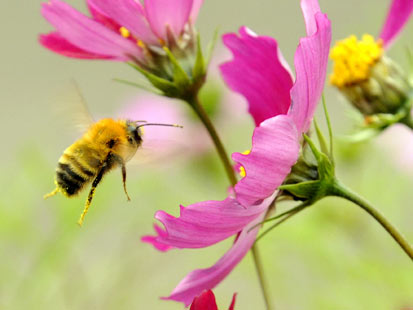Honeybee Deaths Linked to Corn Insecticides

Image credit: Yoshikazu Tsuno/AFP/Getty Images
What was killing all those honeybees in recent years? New research shows a link between an increase in the death of bees and insecticides, specifically the chemicals used to coat corn seeds.
The study, titled "Assessment of the Environmental Exposure of Honeybees to Particulate Matter Containing Neonicotinoid Insecticides Coming from Corn Coated Seeds," was published in the American Chemical Society's Environmental Science & Technology journal, and provides insight into colony collapse disorder.
Colony collapse disorder, or the mass die-off of honeybees, has stumped researchers up to now. This new research may provide information that could lead to even more answers.
According to the new study, neonicotinoid insecticides "are among the most widely used in the world, popular because they kill insects by paralyzing nerves but have lower toxicity for other animals."
Beekeepers immediately observed an increase in die-offs right around the time of corn planting using this particular kind of insecticide.
Pneumatic drilling machines suck the seeds in and spray them with the insecticide to create a coating before they are planted in the ground. Researchers suspected the mass die-offs could have been caused by the particles of insecticide that were released into the air by the machines when the chemicals are sprayed.
The researchers tested several methods to make the drilling machines safer for bees. However, they found that all variations that used the neonicotinoid insecticides continued to cause mass die-offs of bees.
Honeybees are critical for pollinating food crops. Scientists say the disruption of pollination could dramatically affect entire ecosystems. In addition, as the researchers wrote in the study, "In view of the currently increasing crop production, and also of corn as a renewable energy source, the correct use of these insecticides within sustainable agriculture is a cause of concern."